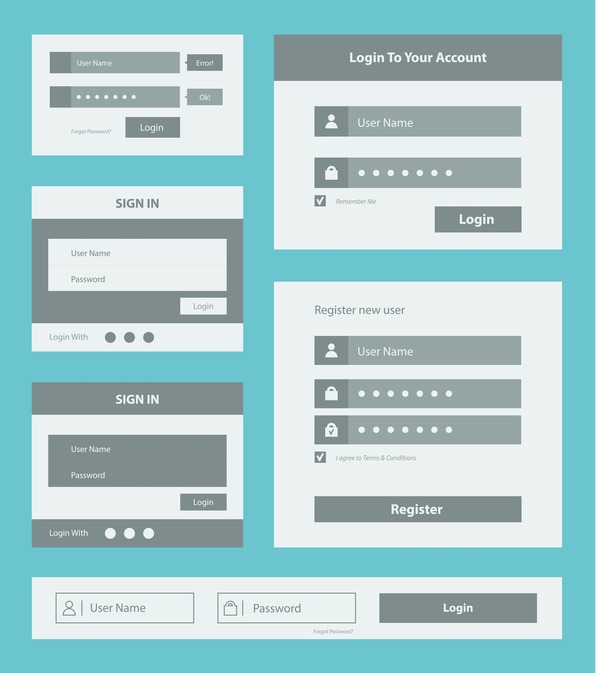If you’ve run into an issue running Oracle Portal 10g with SSL (POODLE), we can help fix it for you. Reach out using the quick contact form in the footer. We would love to help.
Is Oracle’s Vision Corp Guilty of Gender Inequality? An OBIEE Analysis to Investigate Reports
Allegations of Vision Corporation’s activity in gender salary discrimination is something that Oracle’s Vision Corp takes very seriously and have been generous enough to open up all of their information for independent analysis by the public. We will begin an investigation of their full time employee’s salary information to see if the allegations of gender salary discrimination are prevalent in this corporation. We will be using OBIEE 11.1.1.6.0 to investigate. The first thing we will look at is a generated table and pie chart that calculates the number of employees by their gender. We can see that there is a … Read More
Joining Oracle E-Business Suite HRMS Tables in Oracle SQL Developer
JOINS In SQL Developer, JOINS are used to relate information in different tables. A JOIN condition retrieves data from two or more tables. It is performed in the WHERE clause of the select statement. There are multiple types of SQL joins, but this post is going to be focusing on the OUTER JOIN. SYNTAX The (+) operator can be on either the right or left side of the join condition. The side the operator needs to be on depends on whether “Nulls” need to be included from that table. Using the first SQL JOIN, the results would return all the … Read More
Understanding the Core Oracle E-Business Suite HRMS Tables
There are hundreds of tables in Oracle E-Business Suite HRMS, but some are used more frequently than others. When querying, it is important to not only know the common tables that are used, but also to understand how the tables link together. Some of the common tables are listed below. Common HRMS Tables The chart above shows some of the most common tables that are used in Oracle HRMS. Often, a column in one table will link to a column in a different table. For example, the primary key PERSON_ID in the PER_ALL_PEOPLE_F table will link to the foreign key … Read More
Everything You’ve Ever Wanted to Know About HR Date-Tracking in Oracle EBS
Date-tracking is an original function through Oracle E-Business Suite (EBS) Human Capital Management (HCM). This function allows companies to edit their employees’ information and create continuity between different records. Date-tracking is an important function in EBS HCM, especially when it comes to changing employee person status, job position, etc. Correction and Update For this example, Jim Jones started as a Sales Consultant. To change information after it is entered so that instead Jim is married, use the correction function. When correcting an entry, it overrides the previous record with the error and replaces it with the new information. Therefore now it … Read More
Customizing the Auto-Complete Prompt Functionality in OBIEE 11.1.1.6
There are some features that the auto-complete prompt functionality has. It can be turned on and off by either the user or the dashboard designer and the administrator can change different parameters in the code that was implemented to help meet the business’s needs. Turning off auto-complete on the dashboard level: Edit Dashboard and select Dashboard Properties: There will be an option to turn the Auto-Complete off: Turning off auto-complete on the user level: Click on the user name -> My Account: Under Preferences the user can turn the Auto-Complete off: [divider scroll_text=””] The administrator can configure the … Read More
Enabling the Auto-Complete Prompt Functionality in OBIEE 11.1.1.6
OBIEE 11.1.1.6 has an auto-complete prompt feature which when enabled allows users to begin typing a selection in the prompts and OBIEE will suggest and highlight the matching prompt values. This option is only available on the “Choice List” when “Enable user to type values” is selected. When the following code is implemented will also allow the auto-complete to be case insensitive. 1. Navigate to: 1 $MW_HOME/instances/instance1/config/OracleBIPresentationServicesComponent/coreapplication_obips1$MW_HOME/instances/instance1/config/OracleBIPresentationServicesComponent/coreapplication_obips1 2. Open instanceconfig.xml file (make a backup of the file prior to making any changes). 3. Add the following code between the <ServerInstance> … </ServerInstance><ServerInstance> … </ServerInstance> tags: <Prompts> <MaxDropDownValues>256</MaxDropDownValues> <AutoApplyDashboardPromptValues>true</AutoApplyDashboardPromptValues> <AutoSearchPromptDialogBox>true</AutoSearchPromptDialogBox> <AutoCompletePromptDropDowns> … Read More
Installing OEL on Specialized Storage Device (iSCSI SAN)
When installing Oracle Enterprise Linux via graphical interface, we are given the option to install on “Specialized Storage Devices”. This is an alternative to installing on a local hard drive. Select “Specialized Storage Devices”. Select the “Other SAN Devices” tab, the click “Add Advanced Target”. Since here we are using iSCSI, we select iSCSI target. Click “Configure network” and ensure your networking adapter is properly configured. Then click “Add Drive”. Select the network interface that was previously configured. Enter the IP address of your SAN server and the initiator name. You will be presented with … Read More







